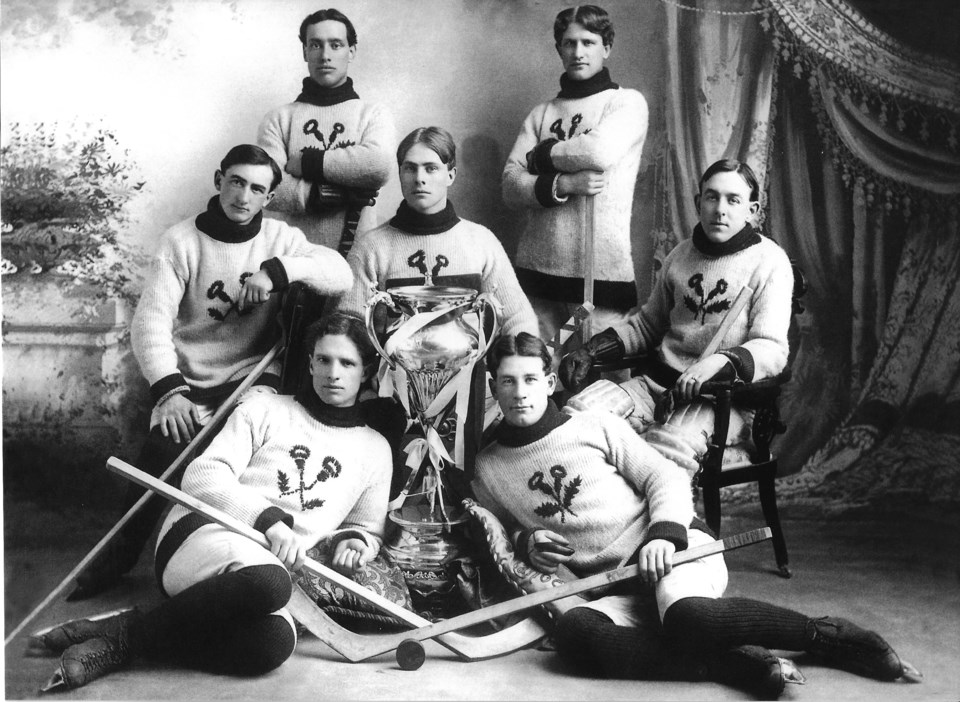A new book is setting the story straight on one of the unlikeliest Stanley Cup champions.
A publisher from Kenora and a well-known Canadian hockey writer have teamed up to bring a definitive history of the Kenora Thistles to print called “Engraved in History - The Story of the Stanley Cup Champion Kenora Thistles.”
The Kenora Thistles won the Stanley Cup in early 1907 from a challenge series with the Montreal Wanderers and successfully defended one challenge of the Cup, before relinquishing it back to Montreal a few months later during a rematch.
The book’s author, Eric Zweig, said he first got interested in the Kenora Thistles from a miniature replica of the Stanley Cup he got as a child, which had Kenora engraved on the side of it.
“I found fascinating that even as a child, a team from a small town could win the Stanley Cup, even in their era, the teams that were winning year by year were Montreal and Ottawa and Winnipeg, which were big cities in Canada.” he said. “Kenora was a town of 6,000 people and the fact that this little town, could put together a team good enough to win the Stanley Cup, has really kind of entranced me since I was a boy.”
Zweig said while the system of awarding the Stanley Cup was different with teams challenging each other, the best teams still won.
“It was a playoff system that rewarded who was the best team at the end of a season. There’s no one who won the cup in that era that was considered a fluke,” he said.
“You were the Stanley Cup champion under the conditions you had to win it, so you were considered the best, regardless of how different it was from today.”
Local Kenora publisher and life-long resident, Rick Brignall, said he wanted to get the story straight about the Thistles and their championship. He added while there have been many different accounts told over the years, many were not correct. Brignall had written a children’s book on the Thistles and had a lot of knowledge about the team and its history.
“I knew one person who knew the story even better than me,” he said. “I put my own pride and ego aside and asked Eric if he could write it. He did an amazing job and the story will live on for many more years.”
Zweig said Brignall approached him about two years ago during the pandemic.
“I jumped on it because I thought, if this book comes out and it’s by somebody other than me, I’ll be really disappointed in myself," Zweig said. "So I said yes and I’m glad I did and it was a lot fun to put it all together.”
Since everything happened over a century ago, Zweig said there was no one he could talk to for first-hand accounts about the team, as even many of the grandchildren of the players have passed on. He added with no radio or television, and only a few moving films of teams from around that era exist, the only coverage came from newspapers.
“Eric’s hockey detective work really set the story straight and hopefully left those legends and fables in the past,” said Brignall.
Fortunately for Zweig, he said newspapers were the “go-to” media and there were a lot of them competing to cover the games, which they did really well.
“The newspapers used to arrange for telegraph reports to be sent to the visiting team's city, so this was pretty much play-by-play that’s remarkably similar to what we’d hear on radio and TV today. And the newspapers would transcribe it word for word,” he said. “So, you have to do a lot of looking a lot of putting things together from a lot of different sources, but it’s all out there if you hunt it down. That’s really the part I like, more than the writing, is the research.”
Zweig said the coverage often didn’t include interviews with the players, “so there’s not a lot of what were they thinking? What were they doing?” But he added, Tommy Phillips, the captain of the Thistles was quoted quite a lot in Winnipeg papers.
“It was nice to be able to get what he was thinking about some of these things, it adds a bit of colour and it’s not just me telling you what I think,” he said.
Brignall said the story of his hometown Kenora Thistles is a special one about bringing small town glory that people in North America can relate to and get excited about.
It’s a story that no other team or town in the world can duplicate, better or ever achieve again, he said.
“Kenora was an integral part of hockey history almost from the beginning. And, throughout its history, we seem to pop up and continue to add to the story. It’s all very exciting to learn about and educate people on,” said Brignall.
Zweig added there was something special about this group of mostly home-grown players that just came together, even just briefly.
“If it was just the fact of the cold weather, and remote conditions, every small town in Canada could have won the Stanley Cup. Something came together in Kenora where these guys got good enough as a team of local homegrown players who grew up in demand. They were all pretty young when they won the Cup, they were all in their early 20’s,” he said. “Four of them, who played on that team and grew up in Kenora, are together now in the Hockey Hall of Fame.”
The book is available from Rat Portage Press and online.
